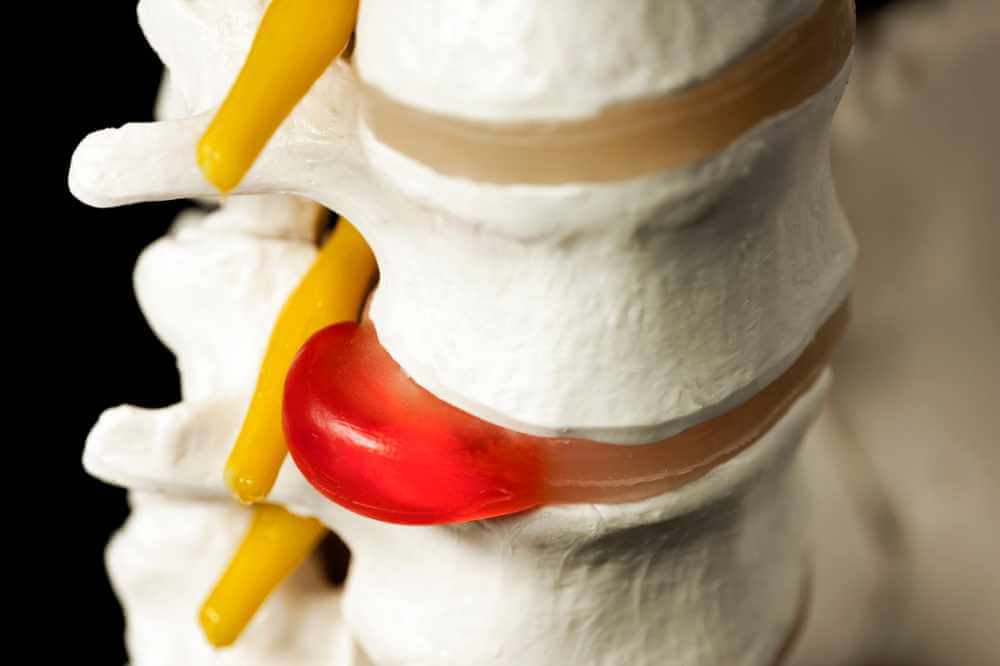
Discs in the human body act as shock absorbers between the vertebrae. Over time, these discs can weaken and be subject to injury. This can range from the outer shell bursting open and the gel inside leaking out, to the disc pushing against nerve roots or the spinal cord. These injuries lead to chronic pain, weakness, and numbing sensations. The most commonly affected areas of the spine are the cervical (neck) and lumbar (lower back) regions.
What are Herniated and Bulging Discs?
Herniated discs and bulging discs are spinal conditions that can cause significant discomfort and pain. Both conditions involve the intervertebral discs, which are gel-like cushions that act as shock absorbers between the vertebrae of the spine. These discs consist of a tough outer layer called the annulus fibrosus and a soft inner core known as the nucleus pulposus.
- Herniated Disc: A herniated disc, also known as a slipped or ruptured disc, occurs when the inner nucleus pulposus pushes through a tear or crack in the outer annulus fibrosus. This protrusion can irritate nearby nerves and lead to various symptoms.
- Bulging Disc: A bulging disc, on the other hand, happens when the disc’s outer layer weakens or stretches, causing it to bulge outward. Unlike a herniated disc, the nucleus pulposus remains contained within the disc’s structure.
What are the Symptoms?
The symptoms of herniated and bulging discs can be quite similar since both conditions can impinge on nerves in the spine. Common symptoms include:
- Pain: Pain may be localized at the site of the affected disc or radiate to other areas, such as the legs or arms, depending on which region of the spine is affected.
- Numbness and Tingling: Compression of nerves can lead to sensations of numbness, tingling, or pins-and-needles in the extremities.
- Muscle Weakness: Weakened muscles in the affected area may lead to difficulties in performing certain movements.
- Sciatica: If a herniated or bulging disc is pressing on the sciatic nerve, it can cause sciatica, characterized by pain, numbness, or weakness that radiates down the leg.
- Changes in Reflexes: Reflexes may be diminished or exaggerated when specific nerves are affected.
- Loss of Balance and Coordination: In some cases, people may experience difficulties with balance and coordination due to nerve compression affecting motor function.
How Chiropractic and Spinal Decompression Can Help
Chiropractic care and spinal decompression therapy are conservative, non-surgical approaches aimed at managing herniated and bulging discs.
- Chiropractic Care: Chiropractors focus on the relationship between the spine and the nervous system. They use manual adjustments and manipulations to realign the spine, reduce pressure on affected nerves, and improve overall spinal function. By restoring proper alignment, chiropractic care can help alleviate pain, reduce inflammation, and improve nerve function.
- Spinal Decompression Therapy: Spinal decompression is a technique used to gently stretch the spine and create negative pressure within the discs. This process, known as decompression, can help retract herniated disc material back into place and reduce bulging. By relieving pressure on nerves, spinal decompression can alleviate pain and promote the healing of injured discs.
How can we help?
We are excited to share with you an effective and non-surgical solution that has brought relief to countless individuals dealing with Herniated and Bulging Discs.
At Grosse Pointe Spine Center, Dr. Mosurak and his team use a comprehensive approach which includes the combined benefits of Chiropractic care and non-surgical decompression with the advanced DRX 9000 technique. Moreover, this non-invasive approach not only targets the symptoms but also aids in enhancing your mobility, reducing inflammation, and offering a long-term solution to your pain.